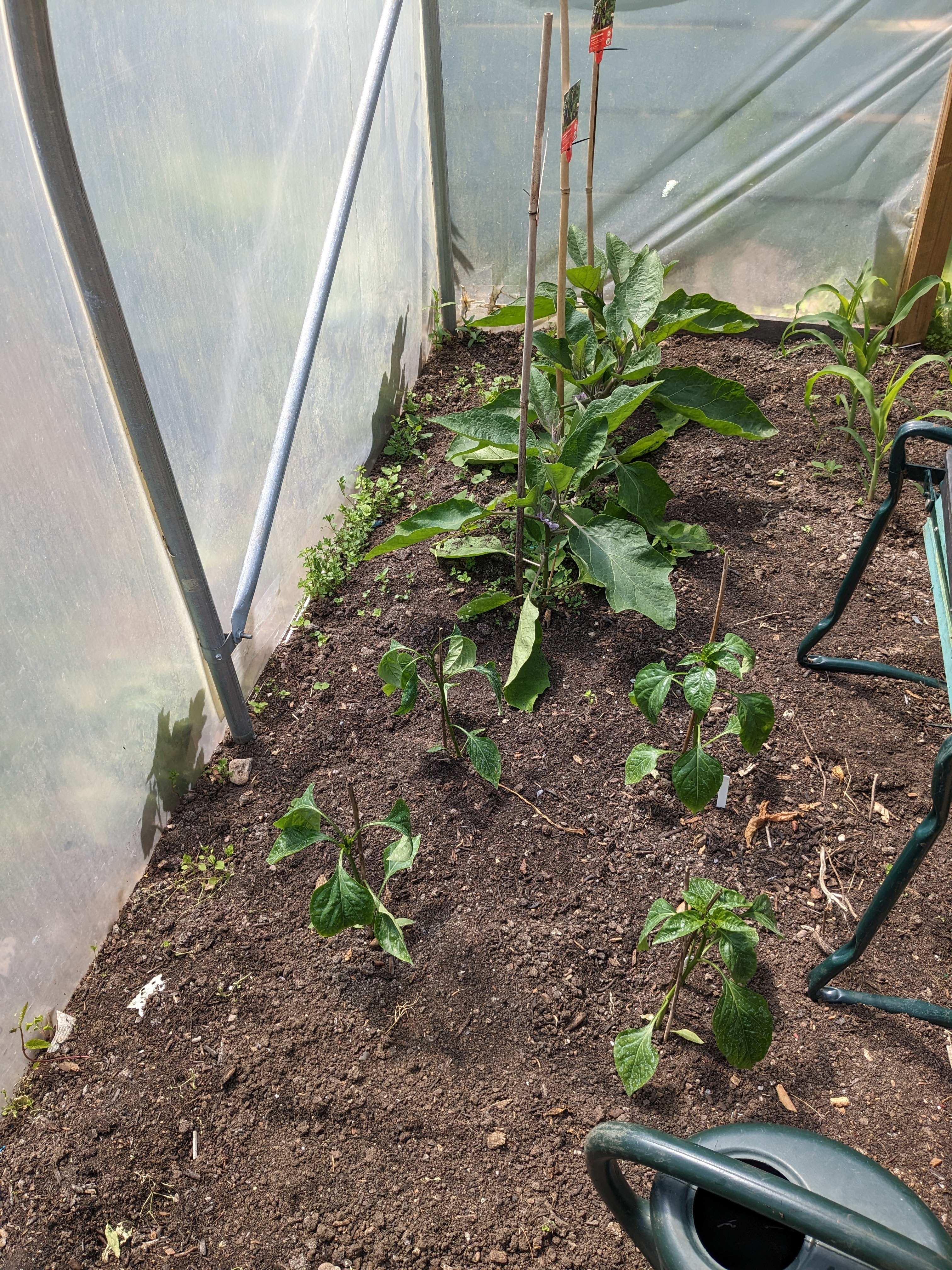
I took five photos of this little garden overlooking the harbour and the village of Portscatho today and I just had to show one of them full size. We’ve been passing it for years ; we’ve even sat in it and rested on our way back to the campsite but – unbelievably – never stopped to examine the plants more carefully. The garden is, or may be, a little garden of remembrance. There’s certainly a monument to the soldiers who died in the Burma Campaign during the Second World War and there’s also a disarmed sea mine with a coin slot for donations to charity.
We’ve been here for two weeks of almost continuous fine sunshine apart from the mother of all storms the day after we arrived, and there isn’t a shadow of doubt that here on Roseland and across on the Lizard, when the sun shines the landscape is dressed like a bride; no expense of nature spared.
So we were there, sitting there eating chocolate and Madame said to me – “if we had a garden it would have to be like this”. Of course, we have the allotment but that’s somehow quite different; productive, perhaps even utilitarian. We sow a few wild seeds and encourage the less thuggish weeds to join the party but that kind of wild takes an enormous amount of time and hard work, and of course it’s about as far from any idea of natural as you could imagine.
Wild gardening is self-effacing. We watch the local plants and see where they grow and when they do best but they’re very much urban, city bound plants; miniaturised and tough as old boots. They flower and grow old fast to avoid the droughts of pavement life. Tiny, resourceful living plants eking out an existence on pavements and cracks in the wall. I’m not knocking them, but a garden is essentially an assembly, a gathering. A truly wild garden is only truly wild when it’s self-replicating.
Ignoring the tidy it up brigade is hard work. Those who deprecate the absence of straight lines of Primroses and Pansies can always nail their grids to their own gardens. It’s not anarchy, it’s a choreographed display of sheer self- organized plant cooperation. It wouldn’t be a silly idea to run a half-day introduction to field botany in that one small space – there’s so much to learn and I wondered if there might be a skilled botanist somewhere in the background.
I didn’t count or list the plants, but they all exist harmoniously in that happy invention, the Cornish wall; a loose assemblage of stone and earth, slightly less than shoulder high and populated so perfectly it would make a Chelsea Flower Show garden look strained and artificial. Just from memory there were Hogweed, Cow Parsley and Hemlock Water Dropwort; Lilies; young self-seeded Echium pinana – the most spectacular members of the Borage family, ten or twelve feet tall like a giant Viper’s Bugloss and, in summer, alive with ants and bees; two species of Medick; Foxgloves; Red Campions; loads of Babington’s Leeks and more. All unadorned by seedsmen’s gaudy favourites and all perfectly adapted to their situation. Born neighbours. The lawn was a mass of daisies, the seats were warm and facing the morning sun and we, for ten the minutes or so that we rested there, were in some sort of paradise.
And, of course the whole garden was alive with insects. Later as we walked back we passed a couple of fields where hay was being turned and baled. Above us a group of four opportunistic Buzzards, attended by a mob of smaller birds trying to drive them away, were circling above the mown field looking for escaping mice. Once or twice they dropped behind the hedge in pursuit of some small victim and then, bored by the persistence of the smaller birds, flew off, mewing to one another.
I don’t know who’s responsible for the upkeep of that little paradisiacal space but they deserve a huge thank-you and a Chelsea Gold medal for standing back and letting it sing its uniquely Cornish song.


















































